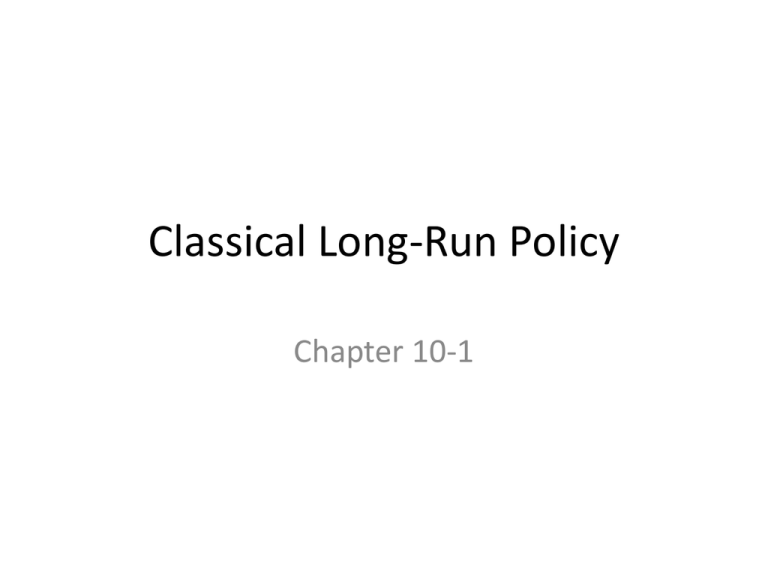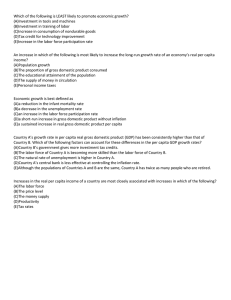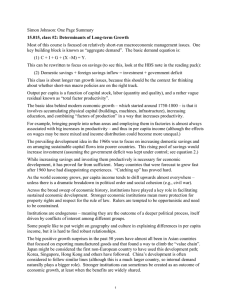Chapter 10 Part One PowerPoints
advertisement

Classical Long-Run Policy Chapter 10-1 Chapter Goals Define growth, list its benefits and costs, and relate it to living standards Discuss the relationship among markets, specialization, and growth List five important sources of growth Explain how the sources of growth can be turned into growth Growth and the Economy’s Potential Output Butter Production Possibility Curves The analysis of growth focuses on forces that shift out the production possibility curve Growth Guns Growth and the Economy’s Potential Output Growth is an increase in potential output Potential output is the highest amount of output an economy can produce from existing production processes and resources Productivity is output per unit of input The long-run growth focus is on how to increase potential output • Say’s Law is that supply creates its own demand The short-run focus is on how to get the economy operating at its potential Importance of Growth for Living Standards Growth in income improves average living standards Because of compounding, long-term growth rates can make huge differences The rule of 72 states: • The # of years to double income = 72/growth rate If China’s per capita income of $8,500 grows 8% per year and the U.S. per capita income of $50,000 grows 1% per year: • Within 27 years per capita income in China will surpass that in the U.S. and after 9 more years will be significantly higher Markets, Specialization, and Growth Markets, specialization, and the division of labor increase productivity and growth • Specialization is the concentration of individuals on certain aspects of production • Division of labor is the splitting up of a task to allow for specialization of production Markets may seem unfair because of the effect that they have on the distribution of income Even though growth isn’t evenly distributed, it generally raises the incomes of the poor Cost of Goods in Hours of Work 1919 Milk (½ gallon) Beef (1 pound) Growth has reduced the number of hours the average person needs to work to buy consumer goods Eggs (1 dozen) Bread(1 pound) Chicken (3 lb. fryer) 2012 Milk (½ gallon) Beef (1 pound) Eggs (1 dozen) Bread(1 pound) Chicken (3 lb. fryer) 50 100 150 Price, in minutes of work Per Capita Growth Per capita output is total output divided by total population Per capita growth means the country is producing more goods and services per person • Per capita growth = % Δ in output – % Δ in population Some suggest that median income is a better measure because it takes into account how income is distributed



